Astilba leaves dry and curl: causes, treatment, prevention
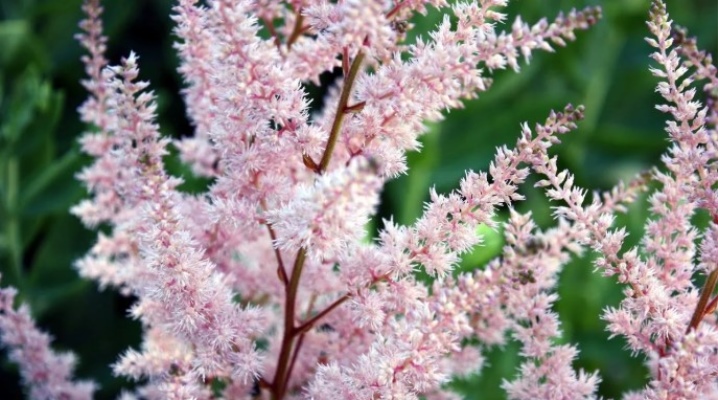
Astilba is one of the rare crops that decorate the darkest parts of the garden, places under conifers and fruit trees. This flower is able to put up with any soil, however, when growing it, some problems can still arise. Sometimes the leaves of the plant begin to curl up and turn yellow - this is a dangerous sign.if resuscitation measures are not taken in a timely manner, astilba quickly dies.
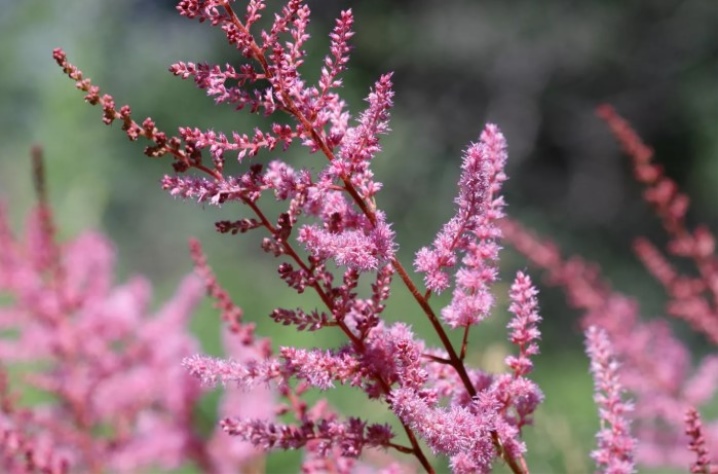
Signs of illness
Astilba is a garden perennial with paniculate inflorescences; the culture is very popular in gardening. Healthy bushes look very decorative, bloom for a long time and magnificently - such a plant is rightfully considered one of the main decorations of the site. The fact that the plant is sick can be judged by the following signs:
- yellowing of leaves - if the color of 2-3 leaves has changed, this should not scare you, but massive yellowing most often leads to rapid drying and wilting of the bush;
- change in color and twisting of leaf plates - in this case, the stems become thinner, and the leaves are wrapped in a tube;
- as a rule, drying and deformation of leaves is accompanied by a slowdown in the active growth of astilba, poor flowering and even its complete absence; flower stalks may disappear for one year, but it happens that the buds do not form for several years in a row.
Important! If you do not pay attention to all of the above signs, then the plant will quickly die.
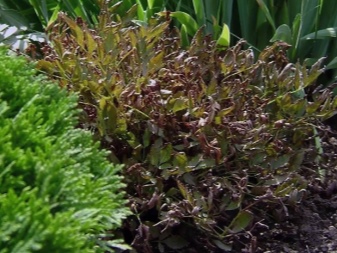

Causes
There are many reasons why astilba dries up and its leaves curl, but most often the problem lies in the lack of nutrients in the soil. Astilba is distinguished by an increased demand for the chemical composition of the earth, therefore, when the appearance of the leaves changes, it is necessary to immediately increase the feeding. However, you should not get carried away with fertilizing either - complex preparations should be used in the volume and concentration indicated in the instructions. Otherwise, you will simply burn the bush. To understand the reasons for the drying and curling of leaves, you need to examine the roots: if you see rotten or dried out areas of the root system, it means that your bush has encountered fungal or viral infections, or has become a victim of garden pests.

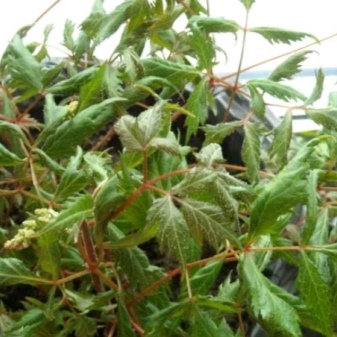
Most often, the plant is affected by one of several infections.
- Root rot or fusarium Is a soil pathogen that often infects flowering plants. The fungus causes rotting of the root system, as a result, the green parts of the plant do not receive water and nutrients in the required volume. As a result, the leaves begin to deform and then dry up and fall off. Usually, the fungus infects the bush in conditions of high humidity, so most often root rot occurs on flowers grown in lowlands or in areas with a high level of groundwater. Stagnation of water inhibits the growth of the plant, while the weaker the astilbe is, the more actively the fungus will spread. Root rot is noticeable by a yellowish-gray bloom on the roots. It remains in the ground for a long time on the remains of withered plants and can be transmitted with the planting material.

- Spotted mosaic Is a viral pathology that causes a change in the color of leaf plates, their twisting and deformation. Brown spots are usually found at the edges, but sometimes they can be seen in the center of the leaf.If, at the first signs of damage, you do not start treating the flower, then the plant dries up very quickly on the root. Bacterial spotting is one of the most dangerous infections that develops rapidly: first black spots appear on the leaves and after a few days the flower dries up.
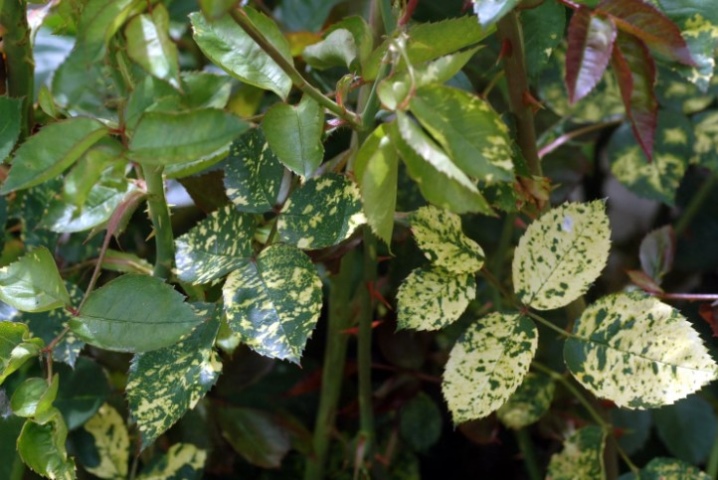
- Phytoplasma diseases - the main insidiousness of such pathologies is that they manifest themselves immediately, therefore gardeners very often buy an already affected plant. The disease is quite serious and difficult to cure; only strong plants with high immunity, which were grown in compliance with all the requirements of agricultural technology, can resist it.
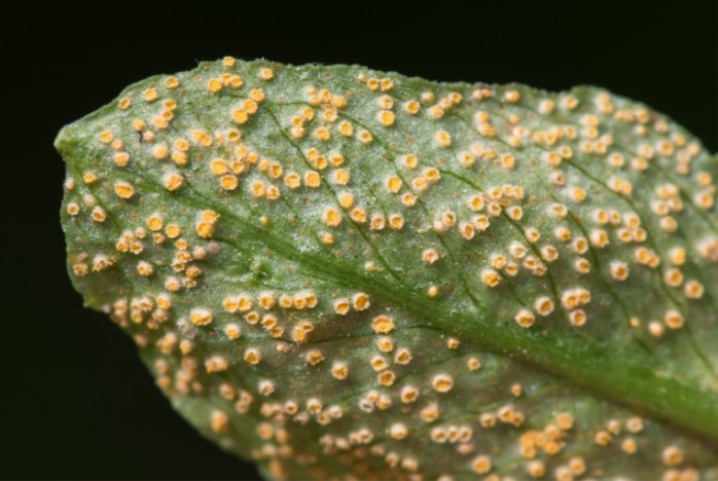
Control methods
If you find that the flower is sick, you cannot hesitate, the fight against the causative agent of the infection should be started as early as possible. Most often, it is advised to resort to spraying to resuscitate a flower. Processing is carried out from a spray bottle, you can buy it at a hardware store, or you can make it yourself, using any shampoo container as a basis. To treat the culture from fungal, bacterial and viral infections, the following drugs are used:
- Bordeaux liquid - a highly effective remedy against all types of fungus;
- copper-containing solutions - copper sulfate is highly effective, it allows you to stop the most rapid development of root rot of a bacterial nature;
- potassium permanganate - potassium permanganate is used for disinfection and disinfection of roots that have begun to rot;
- industrial insecticides - are highly effective in the late stages of infection, as well as when the plant is damaged by garden pests.
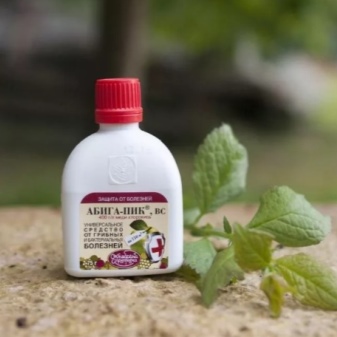
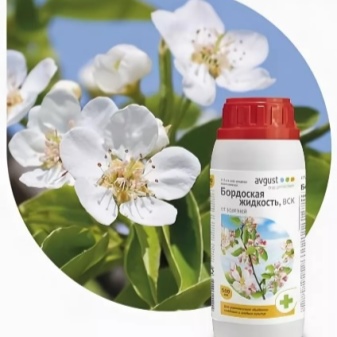
Pests
Curling and wilting of astilba leaves may be associated with the activity of pests. There are frequent cases when damage leads to the complete death of the flower.
- Slobbering penny - this insect lays its larvae on young shoots and in leaf axils and surrounds them with dense foamy secretions, through which even pesticides do not penetrate. It is for this reason that it is impossible to get rid of pests with fungicides. The only way is to collect all the insects and their larvae by hand, and only then process them with Karbofos, Conform or Rotor.
- Strawberry nematode - this garden pest affects the delicate leaves of young astilbe. The affected areas curl, yellowish spots appear on them, over time their color changes to brown. Affected plants dry quickly, become depressed, the formation of peduncles stops. It is impossible to get rid of the strawberry nematode; when the first signs of the disease appear, astilbe should be uprooted and burned. Otherwise, the pest will quickly spread to neighboring bushes and destroy the entire flower garden.
- Gall nematode - a dangerous pest that affects the root system of the plant. Astilba begins to grow slowly, the leaves dry up and fall off, and flowering stops. If you suspect that your plants have encountered a rootworm nematode, unfortunately, you will have to dig up and destroy the bush, and treat the ground around with a fungicidal solution, it is impossible to save such a flower.
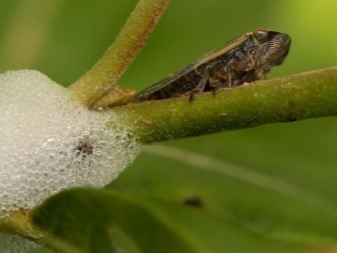
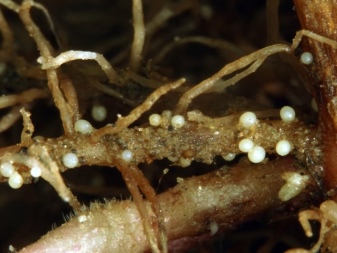
In order to prevent the control of garden pests, the plot of land around the flower garden should be sprinkled with ash from time to time. By the way, this is not only an effective antiseptic, but also a good fertilizer containing high concentrations of potassium, which is so necessary for a lush and long flowering bush. If insects have occupied the astilba, you can get rid of them with the help of tobacco fumigation. For the purpose of prophylaxis, a similar treatment can be carried out from time to time - astilba tolerates tobacco smoke well. For the procedure, tobacco leaves are used, dried and ground into dust.
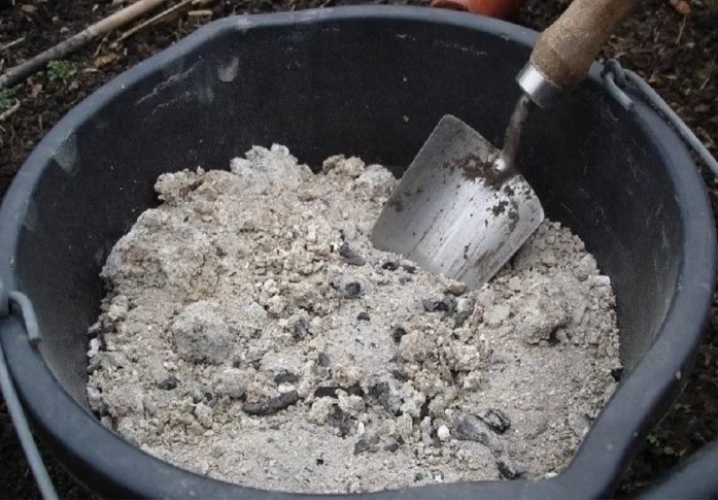
Preventive measures
In the care of astilba, the prevention of the disease is extremely important. To protect your plant from damage, you should adhere to the following recommendations:
- buy seedlings exclusively from nurseries with a good reputation - planting materials purchased from hands are often infected;
- damaged and diseased areas of the flower must be removed and burned;
- after transplantation, astilba should be examined from time to time, especially during the flowering period of the bush, the examination should be especially careful;
- do not grow astilba in the same place for a long time;
- do not plant shrubs near infested horticultural crops.
Important! You should be aware that many pathogenic microorganisms - viruses, as well as bacteria and insect larvae, live in peat and manure, so these fertilizers can only be purchased in safe places.
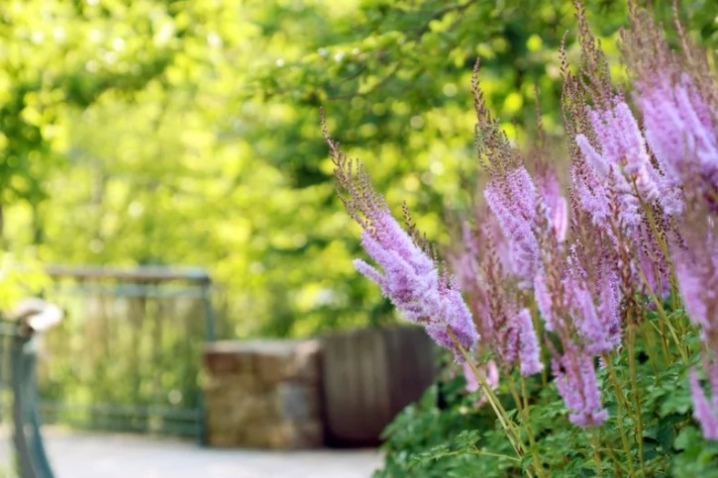
If you follow these simple preventive measures, you can avoid most of the diseases of astilba. Rest assured, the plant will thank you for taking care of a long and long flowering.
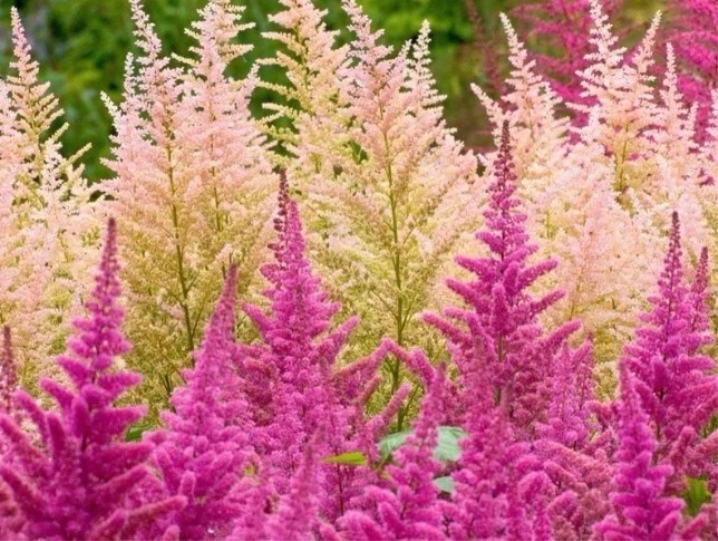
You can learn about growing and caring for astilba from the video.







































































































The comment was sent successfully.